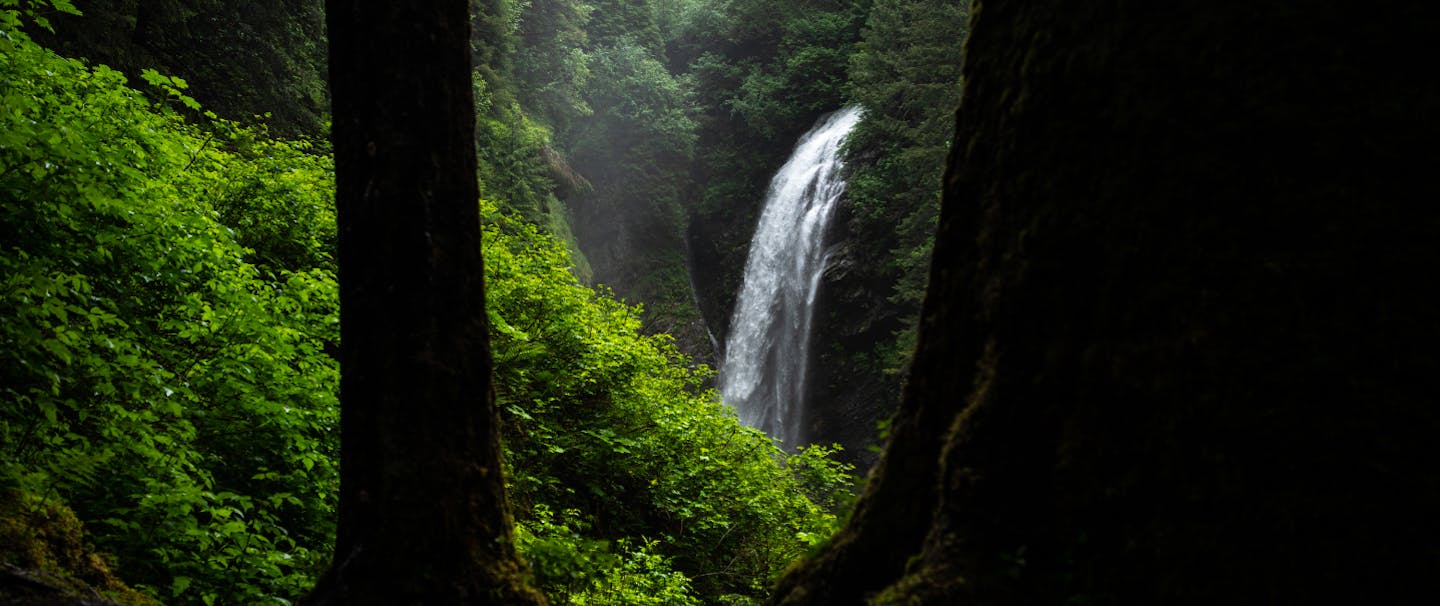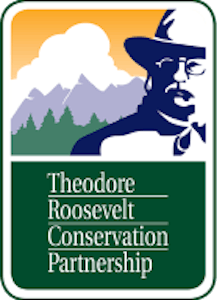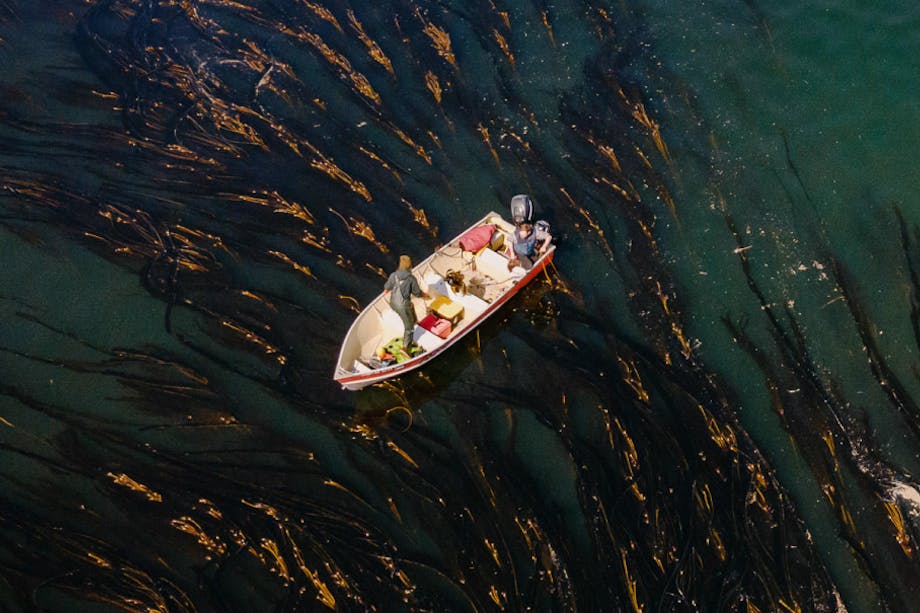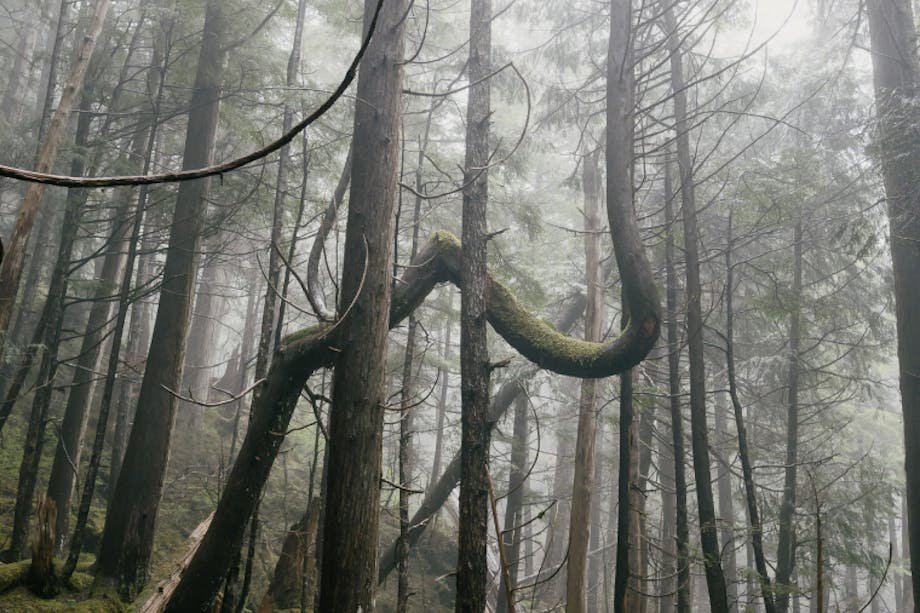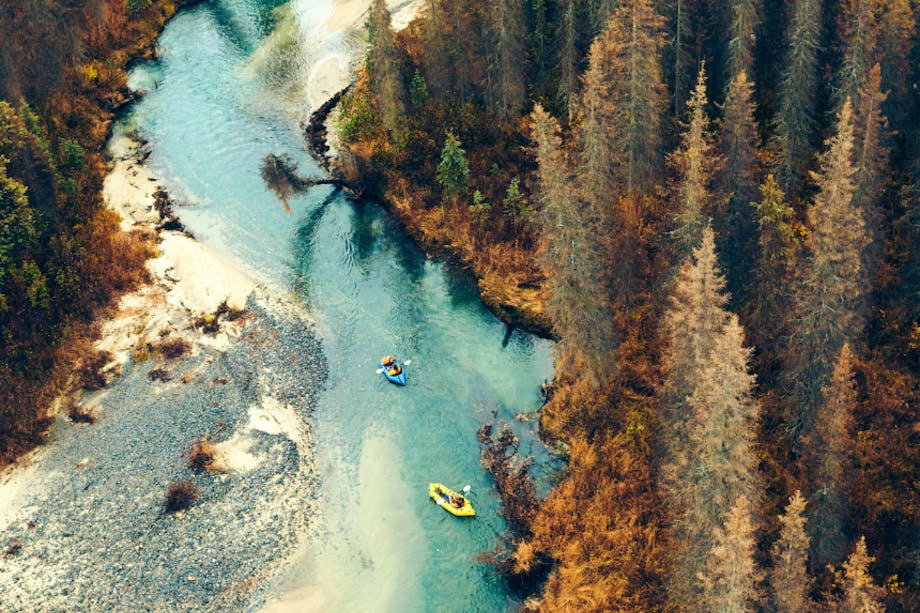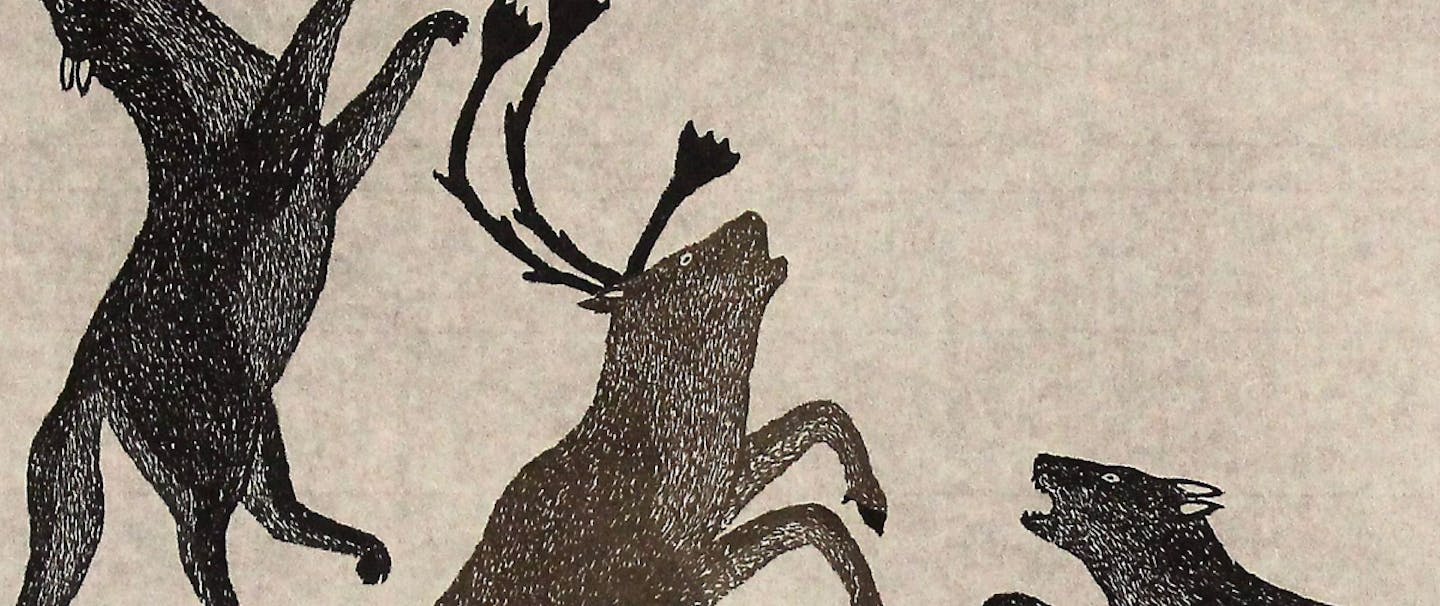Southeast Alaska’s Tongass National Forest is alive with lush coastal rainforests–bears lumbering across beaches, flashes of dime-bright salmon in sparkling streams, Sitka black-tailed deer grazing in alpine meadows, and mountain goats gazing down from towering peaks.
The largest national forest in the U.S., the Tongass is the traditional homeland of the Tlingit, Haida, and Tsimshian peoples, who have served for more than 10,000 years as the cultural and ecological stewards of these lands. Approximately 75,000 people currently live in towns and villages along the coastal mainland and archipelago of more than 1,000 islands–their lives inextricably linked to the Tongass.

The USDA’s proposed Southeast Alaska Sustainability Strategy charts a new management direction for the Tongass centered on the responsible stewardship of the region’s public lands and waters. This framework directs the U.S. Forest Service to prioritize restoration, access for outdoorsmen, and replacing old-growth logging with practices to yield a productive resource for generations to come.
The strategy embraces improving the health of watersheds and wildlife habitat, repairing bridges and culverts impeding fish passage, as well as building and maintaining trails and public-use cabins. The agency is also investing $25 million in technical assistance for community-led projects and improving consultation with Alaska Native entities including sovereign tribal governments. A resilient Tongass, which stores more than 40 percent of all carbon sequestered in U.S. national forests, is essential for climate and communities.
Southeast Alaska is extremely remote, with most of its citizens cut off from the mainland road system and paying a premium for groceries and electric power. Their food, income, culture, identity, and well-being are all tied to the Tongass, as are the visitor and seafood industries that provide nearly one-quarter of all jobs in the region.
The magnitude of the Tongass’ cultural, ecological and economic importance explains why such a wide cross section of stakeholders–including residents, Alaska Native tribal entities, business owners, and conservation groups–cheered a recent announcement from the U.S. Department of Agriculture regarding the national forest’s future.
The Southeast Alaska Sustainability Strategy and Indigenous-led models–such as the newly-launched Seacoast Trust, which funds the ongoing work of the Sustainable Southeast Partnership, are inspiring examples of resource management frameworks that align with local values while supporting rural economic development.
You can help ensure the future management of the Tongass respects local and Indigenous values, safeguards the unique ecology of Southeast Alaska, and sustains the region’s communities and industries over the long term. Please speak up now in support of implementing the Southeast Alaska Sustainability Strategy, including reinstating the Roadless Rule. This action would restore conservation measures to 9.2 million acres of undeveloped public lands in Southeast Alaska that were opened last year despite overwhelming public opposition. The U.S. Forest Service is accepting public comments until Jan. 24, 2022.
Learn more about the Tongass, viewed through the lens of five Southeast Alaskans whose lives, culture and existence are intertwined with this incredible and rare natural resource.
Miakah Nix

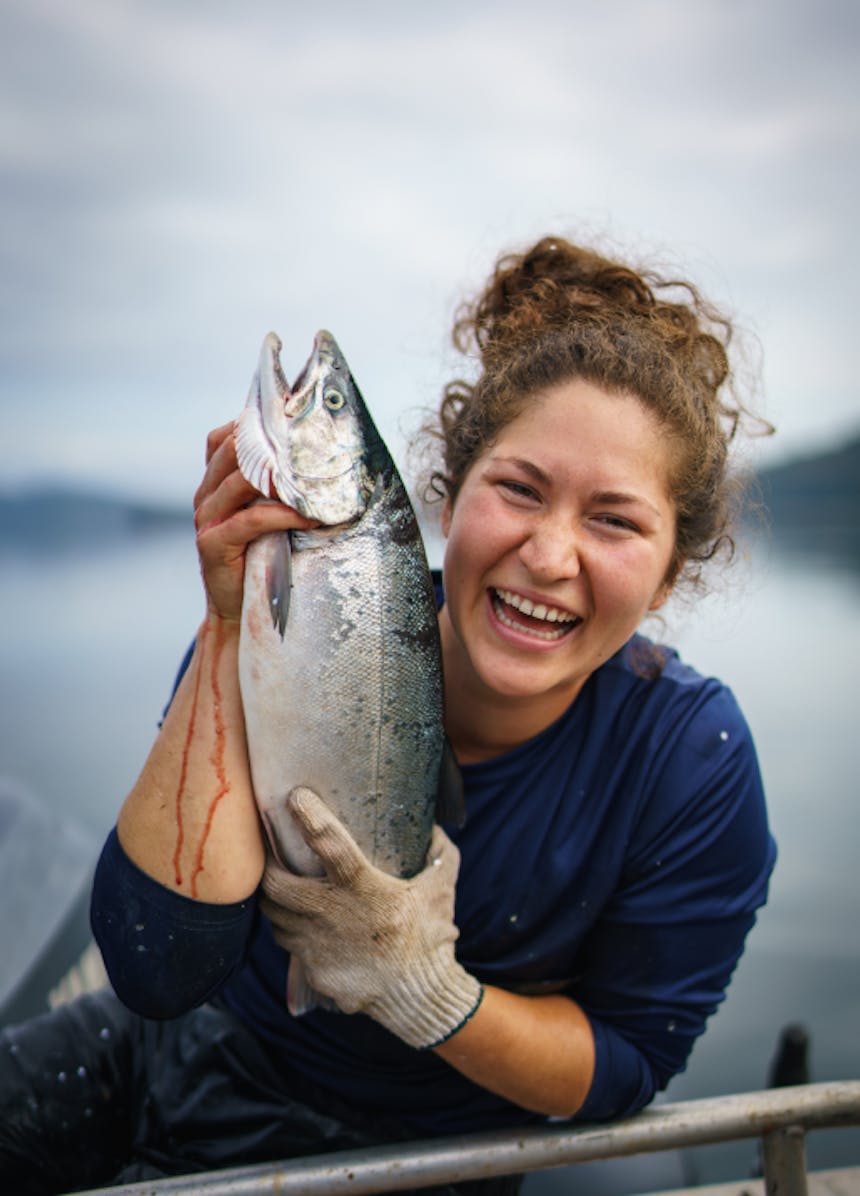
Miakah Nix (Haida/Tsimshian) is the lead coordinator for the Keex’ Kwaan Community Forest Partnership (KKCFP). When she’s not working with the tribal sovereign government in Kake, she’s out mushrooming, salmon fishing, gardening, hunting, or hiking—and sometimes you’ll find her inside singing karaoke.
On the job, she helps ensure KKCFP runs smoothly. This community forestry initiative works to achieve a resilient blend of timber, salmon, and wildlife production while supporting a culturally rich and diversified local economy and healthy watersheds. Between KKCFP and a sister program in the Tlingit community of Hoonah called the Hoonah Native Forest Partnership, these forestry initiatives are demonstrating what land management that prioritizes Indigenous and local stewardship, employment, and priorities can look like on the Tongass.

For Nix, the future of managing the Tongass for justice and sustainability depends on further investing in community forest partnerships like these, as well as connecting with broader Indigenous Guardianship program development locally and throughout the region.
“One of the core differences between land management and Indigenous land and water stewardship- the work doesn’t stop at the end of a work day, or at the edge of a property line- it’s all connected to everything we are and everything we honor every moment of every day in Keex’ Kwaan.”
“On the ground, these crews are doing everything from enhancing and restoring salmon streams, monitoring forest conditions, creating habitat for wildlife, and mapping plants as food and medicine for community use. But these same crews are also bringing youth crews out in the field to support the next generation’s personal and professional development.
“One of the core differences between land management and Indigenous land and water stewardship- the work doesn’t stop at the end of a work day, or at the edge of a property line- it’s all connected to everything we are and everything we honor every moment of every day in Keex’ Kwaan.
“The Tlingit, Haida, and Tsimshian peoples have been taking care of this forest, these waters, these valleys and salmon streams for more than 10,000 years. By combining the traditions, skills, knowledge, and understandings held within our Indigenous communities with the best available science and technology, we can work together to invest in the continuation of our peoples’ and neighbors’ way of life in perpetuity.” —Miakah Nix
Jed Delong
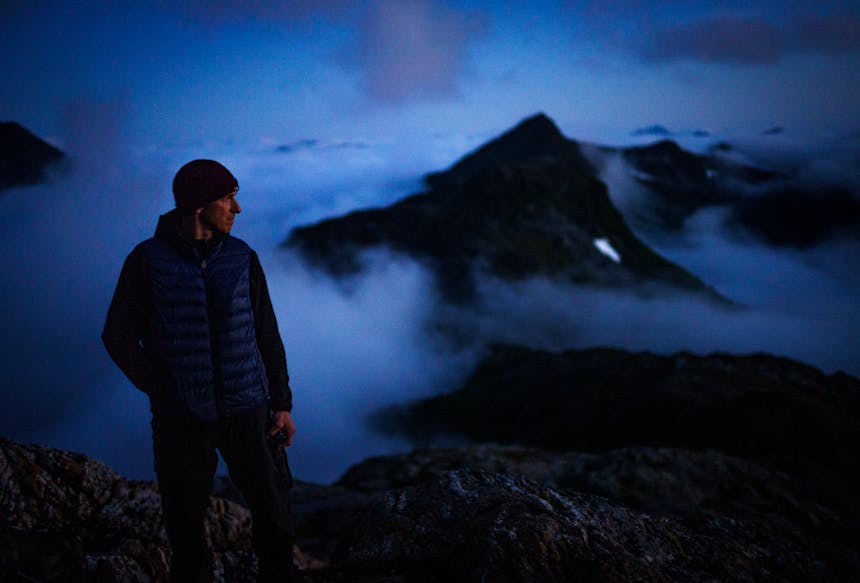
For as long as he can remember growing up in Sitka, commercial pilot Jed Delong has been immersed in the hunting and fishing culture of the Tongass. His father relocated the family to Southeast Alaska specifically for the opportunities to experience wilderness and remote woods and waters, which provided a steady diet of venison, halibut, and salmon throughout Delong’s childhood. As a result, hunting and fishing felt like more of a chore than fun, but his roots in these traditions grew into a passion as he grew older. Now, he gathers nearly all the protein his own family eats.
“It’s relatively easy to cut in a road, or cut down a forest, but the time it takes to heal those scars is measured in generations—not years.”

“Seeing the world from a cockpit gives you a lot more perspective on the size and scale of the landscapes below. Nearly every corner of the earth has been visibly and dramatically impacted by people, and as soon as you climb a few thousand feet you can see how closely roads, logged areas, mines, and developments have encroached on what would be perceived as wild from the ground. The Tongass is no exception to this, but thankfully the spaces between negative human disturbance are more expansive. It’s relatively easy to cut in a road, or cut down a forest, but the time it takes to heal those scars is measured in generations—not years.
“My family lives here specifically because we can get our own food in a much more fulfilling way than buying it from a grocery store or ordering it to be delivered to our front door. We hunt, fish, and forage not just for sustenance, but for the experience. There is a learning process that never ends when subsisting here. Figuring out the seasonal habits of Sitka black-tailed deer and mountain goats has been my primary hunting obsession, but even once you find them, getting to the places where they live can be extremely challenging—especially with mountain goats.
“Alpine hunting in Southeast Alaska by foot is not for everyone. Picking berries, greens, and mushrooms is also popular here. These are usually a little easier to track down, but there’s still the element of knowledge that must be acquired before you can do so.” —Jed DeLong
Andrea Cook
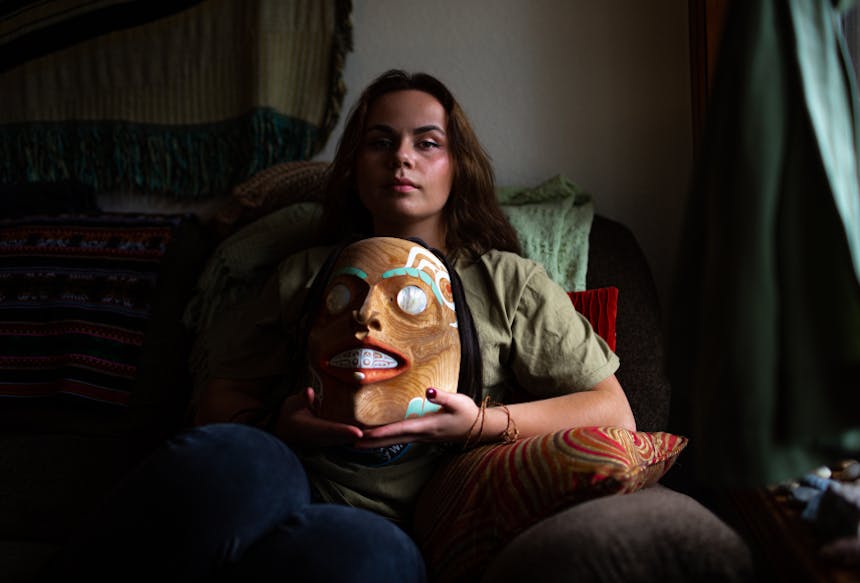
Andrea Cook, T’saak Ka Juu of the small Alaskan Native Haida community of Hydaburg is an artist and university student. With the Pacific Northwest Research Lab, a local conservation organization called the Sitka Conservation Society, and the First Alaskans Institute, Cook spent the summer of 2020 researching the social, economic, and cultural value of red and yellow cedar to Alaska Native artisans and communities.
Through research, apprenticeships, and interviews with artists and other stakeholders, Cook and a team of researchers and culture bearers, worked to elucidate the difficult-to-quantify value of cultural wood for land managers on the Tongass.
“If these trees were to disappear it would be destroying a whole way of life and not just that---it would be destroying our land, our fish and doing away with so much that is vital to the earth that we walk on.”
“It is profoundly difficult to quantify or even articulate the value of these trees and the power of our artforms with Western audiences. It is literally my heritage, my culture, it’s what has served my people in endless ways. Cedar was our clothing, it was what helped us gather our foods in baskets, it was our stories carved in poles, it was our transportation and canoes, it has served as our way of life forever and continues to do so.
“Caring for the health of these forests is about preserving our identity because practicing those traditions with cedar is still linked to our empowerment, our collective health and our wellbeing. If these trees were to disappear it would be destroying a whole way of life and not just that—it would be destroying our land, our fish and doing away with so much that is vital to the earth that we walk on.” —Andrea Cook
Tad Fujioka
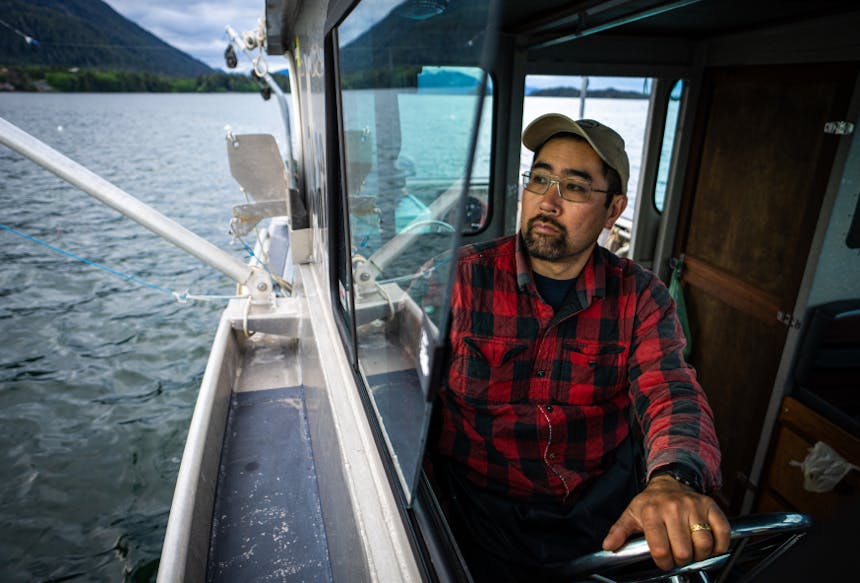
Of the top 100 fishing ports in the United States, six are located in Southeast Alaska, a testament to the value and abundance of the Tongass National Forest’s fisheries resources. As a commercial salmon troller and resident of Sitka, Tad Fujioka knows firsthand how profoundly families and communities like his depend on the region’s fish for both sustenance and income.
Fujioka serves as the chairman of the board of directors for the Seafood Producers Cooperative, the oldest organization of its kind in North America since its establishment in 1944. Shipping all over the country under the retail brand Alaska Gold, the co-op’s roughly 400 members participate in relatively slow-paced troll and longline fisheries, allowing these operators to give their catches careful attention. Alaska Gold fish are individually bled, cleaned, and quickly iced as they come aboard, which provides the quality of product that gives the brand its stellar reputation.


“The fish and other renewable natural resources of Southeast Alaska have supported local families for thousands of years and hopefully will continue to do so for just as many generations to come.”
“Salmon has been the mainstay of the local indigenous economy for thousands of years, served as the primary tax base for the state of Alaska in the pre-oil era, and remains the most important and most utilized resource throughout Southeast Alaska.
“Almost all of the salmon that I catch were born in freshwater that flowed through the Tongass National Forest. When you buy and eat a piece of wild troll-caught Alaskan salmon, you are supporting an independent small-boat fisherman whose business depends on productive watersheds. The commercial fishing industry provides jobs in very small remote communities, where opportunities to earn cash are rare.
“We are very aware that we have no other waters to turn to should the Tongass cease to generate the salmon that it has for thousands of years. We depend on these fish and their habitat, and we do all that we can to sustain the productivity of the lands and waters around us. The fish and other renewable natural resources of Southeast Alaska have supported local families for thousands of years and hopefully will continue to do so for just as many generations to come.” —Tad Fujioka
Katie Riley

Like many residents of Southeast Alaska, Katie Riley wears many hats: She’s a commercial fisherman, a hunter, a snowboarder, and she serves on her local planning commission, all while working for the Sitka Conservation Society—the oldest conservation organization in the state.
The Tongass is the only home that Riley has known, and she credits it for giving her a worldview rooted in gratitude and sense of place that guides her advocacy.

”the USDA’s proposal recognizes that the priorities of communities and Tribes—not corporate interests and politicians in D.C.—should be driving the agency’s work in the Tongass. It’s centered on a trust-building approach that’s already proven to be effective, and that provides a framework for the collaborative and equitable forest management needed going forward.”
“When I am filling my freezer with fresh venison to eat during the winter; or paying my bills with money that I earned while commercial salmon fishing during the summer; or hiking, snowboarding, or camping on spectacular public lands throughout the year, I’m thinking about how to ensure that these lands are protected for future generations to continue deriving deep meaning, culture, enjoyment, and purpose from them.
“I think that the new Southeast Alaska Sustainability Strategy announced by the U.S. Department of Agriculture in July gives hope to many of us in the region. If implemented earnestly, it will move public land management in the Tongass away from the large-scale commercial old-growth timber sales that have sucked up the majority of the U.S. Forest Service budget and attention toward a path where the agency is investing in the multitude of resources that the forest provides for our economic development and health—including fisheries, carbon sequestration, food for subsistence harvesting, renewable energy, wood for cultural and heritage activities, and tourism and recreation opportunities.
“Most importantly, the USDA’s proposal recognizes that the priorities of communities and Tribes—not corporate interests and politicians in D.C.—should be driving the agency’s work in the Tongass. It’s centered on a trust-building approach that’s already proven to be effective, and that provides a framework for the collaborative and equitable forest management needed going forward.” —Katie Riley

THIS PHOTO ESSAY WAS PRODUCED IN PARTNERSHIP WITH THE THEODORE ROOSEVELT CONSERVATION PARTNERSHIP (TRCP)
Founded in 2002, the TRCP is the largest coalition of conservation organizations in the country, uniting and amplifying the voices of sportsmen and women by convening hunting and fishing groups, conservation organizations, and outdoor businesses to a common purpose: guaranteeing all Americans quality places to hunt and fish.
